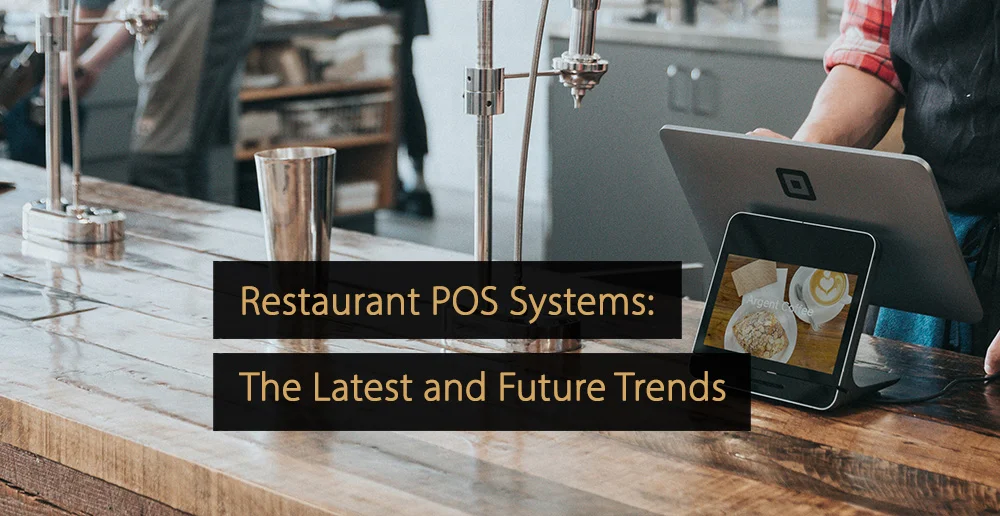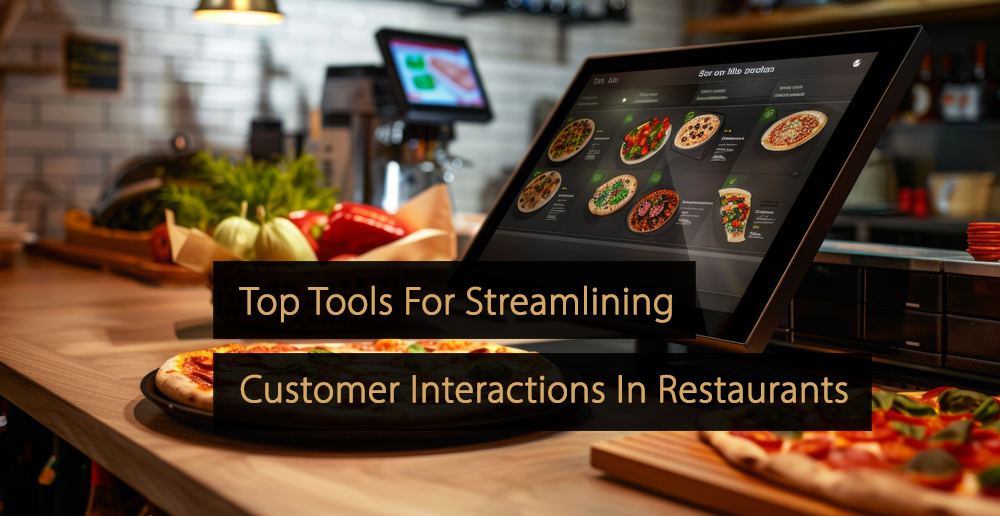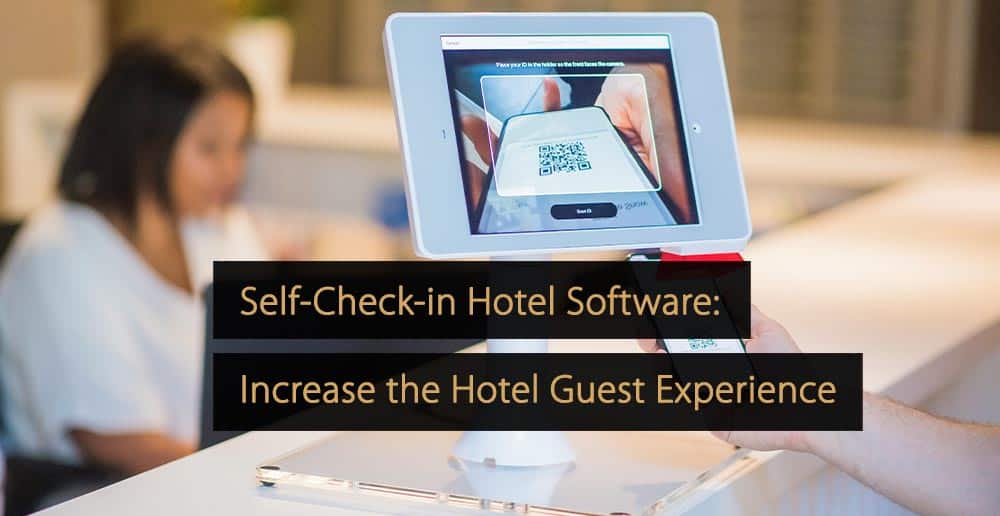Effective use of point-of-sale systems can have a transformational effect on restaurant industry employees. However, it is important to understand the associated trends to get the most from restaurant POS systems. In this article, you can learn about existing and upcoming trends and how they impact restaurants and their customers.
Table of Contents:
- What is a POS System?
- Restaurant POS Systems and Their Benefits
- Latest Trends in Restaurant POS Systems
- 3 Future Technological Trends in Restaurant POS Systems and Their Upgrades
- Hospitality and Restaurant POS Systems: Exploring the Value
- Restaurant POS Systems and Voice Technology
- Benefits of Hotel and Restaurant POS Systems
- Restaurant POS Systems and Restaurant Management Systems
- How to Choose Your Food Ordering System
What is a POS System?
A POS or a point of sale system, is an electronic software system that allows users to process payments, track sales data, and access other important information. With this in mind, restaurant POS systems serve as a means of processing orders and payments within restaurant settings.
One of the core differences between a POS system and a more conventional cash register is the integration with wider company data and the automation on offer. This allows sales data, revenue information, inventory levels, and other relevant information to be updated automatically as orders are made, and payments are processed.
Many newer solutions tend to be cloud-based, providing compatibility with a wider range of devices.
Restaurant POS Systems and Their Benefits
One of the biggest benefits associated with restaurant POS systems is their versatility. Using a device with access to POS software, it is possible for restaurant staff to do everything from printing food orders for kitchen staff, to creating bills for customers, and processing credit card, debit card, mobile wallet, and cash payments.
At the same time, the POS system can help to aid communication between different areas of the restaurant. For instance, each order can feed real-time information so inventory levels are automatically tracked. In many cases, POS systems can also handle restaurant reservations too.
Going further, some of the best systems include built-in analytics and marketing features. Meanwhile, cloud-based solutions have aided portability, allowing payments to be easily processed using tablets or smartphones and allowing remote access to data. Therefore, the systems are core restaurant technology rather than simple payment systems.
Latest Trends in Restaurant POS Systems
Those in charge of restaurants need to gain a clear sense of the latest restaurant technology trends, and the trends associated with restaurant POS systems are a good example of this. Below, you can find out more about how POS systems are used by restaurants and similar businesses in the food and beverages industry.
Self-Ordering
For many restaurants, self-ordering has been one of the biggest trends of recent times, and restaurant POS systems can help to facilitate this. Using these systems, it is possible to set up a process where customers place their orders themselves, cutting waiting times while avoiding issues where employees get their orders wrong.
The most common approach to self-ordering is through a website. Here, visitors can go to the website’s order page, place and pay for it via credit card, debit card, or a service like PayPal, Apple Pay, or Google Pay. This can streamline the dining experience while assisting restaurants in offering a takeaway service.
A good alternative to this is through a mobile app. The app can be made available for free through the Google Play Store and Apple App Store, and QR codes can be provided in the restaurant to make this easier. From there, it functions much like the website, with a menu and the ability to place and pay for orders. Apps can also add to the personalization component by allowing users to save orders or favorite meals for future use.
Finally, the third main type of self-ordering within the restaurant industry occurs via kiosks placed in the restaurant. These are ideal for fast food or casual restaurants, allowing users to skip queues and customize their orders more easily. Kiosks also provide great opportunities for selling extras and promoting special offers.
In all cases, the self-ordering system connects with other aspects of the restaurant POS system.
Video: Are self-order kiosks a good idea for restaurants?
Mobile Point-of-Sale
A major trend that those involved with restaurant management must be aware of is the rise of mobile POS systems. These systems are designed to work on smartphones or similar portable devices, such as tablets and iPads.
When using mobile POS systems, staff are afforded greater flexibility, while customers have more opportunities to pay. It can speed up restaurant operations, too, reducing wait times for customers and potentially allowing restaurants to seat more guests each day. Setup is generally extremely quick and easy, but steps need to be taken to guarantee mobile POS systems’ security and inspire trust in customers.
A good example of mobile POS software is mPOS. With this solution, you download the mPOS app, connect your card reader to the mobile device the software has been installed on, and you can process payments. The system is cloud-based, meaning data is continually updated and saved, but an internet connection is always required.
Mobile POS software is available for both Android and iOS devices.
Cashless Restaurants
A growing trend within various aspects of the hospitality industry, including restaurants, has been going cashless. Some restaurants have stopped accepting paper notes and coins, while others have taken steps to actively discourage their use in favor of cards, mobile wallets, and online payments.
There are several key benefits associated with going cashless too. Avoiding the use of physical money is more hygienic, and this was an especially significant consideration at the height of the COVID-19 pandemic. Additionally, electronic payments can be tracked more easily, which offers safety and security advantages. It can also offer businesses protection against break-ins and theft because there is no money on-site.
Restaurant POS systems make the transition to cashless fairly simple. Although some restaurants hesitate to put obstacles in the way of customers, most customers want a clear process, explained beforehand, that works as seamlessly as possible. A good restaurant POS system can certainly deliver this.
For employees, moving towards cashless restaurants can help them feel safer in the workplace because they are less vulnerable to threats like burglaries and less likely to get the blame for cash-related errors. Additionally, the move can help encourage customers to use restaurant apps and pre-book meals, making life easier for kitchen staff, who then know what they need to prepare in advance.
Read the “Contactless Payments Are Becoming More Important Within Hospitality” article for more information.
3 Future Technological Trends in Restaurant POS Systems and Their Upgrades
Aside from being aware of current restaurant POS system trends, it is also important to think about the future and some emerging trends that are likely to become more prominent in the years ahead. Below, you can learn more about three technological trends that will disrupt the restaurant industry in the years ahead.
Voice-Activated Ordering
Voice recognition technology has improved dramatically over recent years. Demand for voice ordering within the hospitality industry will likely grow as more consumers use devices like smart speakers and voice assistants on their mobile phones. Restaurants are ideally placed to capitalize on this.
Logically, voice ordering is most likely to take off in fast-food restaurants, especially those offering a drive-through takeaway service. However, it could also be useful in other settings too, taking pressure off of waiters and providing customers with a faster and more intuitive option than self-ordering on an app.
Video: Voice Ordering for Restaurants and Food Delivery
Augmented Reality (AR)
Modern reliance on smartphones is also likely to enable greater use of augmented reality within the restaurant industry, and there are several ways this could potentially manifest in the years to come.
The augmented reality inside buffet restaurants could be used to mark different sections or map out the best route. In other restaurants, AR could mark out pay points or areas to queue, or it could be used to provide animations or themed graphical overlays that can help to entertain younger guests.
Authentication Technology
Mobile phones, iPads, and various other devices already use facial recognition and fingerprint scanning to authenticate that the user is who they say they are.
This technology is likely to disrupt the hospitality industry at large in the years to come. It can be used within restaurant settings to confirm arrival when customers have booked a table. The first signs of its usage are already in place, with Apple Pay customers using Face ID, while Google Pay customers may use other biometrics.
Restaurant POS systems are facilitating several new trends for those in the industry, from self-ordering and voice ordering to customer authentication and cashless restaurants. Getting the most from POS systems requires business leaders to keep pace with emerging trends but also keep one eye on the future too.
Hospitality and Restaurant POS Systems: Exploring the Value
Point of sale systems, or POS systems, have an important role within the hospitality industry in general, assisting businesses with everything from record keeping to data analytics and payment processing. For business leaders, understanding the full value of these systems is crucial.
Read the “POS Systems: Overview and Importance in the Hospitality Industry” article to gather more information about how POS systems are used in hospitality and how they can benefit businesses and their managers.
Restaurant POS Systems and Voice Technology
Voice recognition technology is quickly emerging as a key trend in the hospitality industry, but its uses are not limited to restaurant POS systems alone. Voice search is one of the biggest growth areas, and businesses in the industry need to be aware of how customers use this and how it can be leveraged.
Read “Voice Search: How the Hospitality Industry Can Benefit From It!” if you would like to learn more about the rise of voice search technology and the ways hospitality businesses can capitalize on this trend.
Benefits of Hotel and Restaurant POS Systems
The use of hotel and restaurant POS systems offers several key benefits for business leaders and their employees, including integration with wider company data and the ability to process all types of payments from customers. However, there are various additional benefits that many businesses are not yet making the most of.
Take a look at the “6 Benefits of Point-of-Sale Software for Hotels” article to explore the topic of POS systems within hospitality further and to learn about some of the specific advantages of using these systems.
Restaurant POS Systems and Restaurant Management Systems
Restaurant management systems are intended to assist with common managerial tasks and may include components from restaurant POS systems, order management software, employee management software, and more. Understanding restaurant management software and its uses can help you to optimize financial results and the customer experience.
To find out how the software works, the main features included, and the components that make up restaurant management software read “Restaurant Management Systems: Overview, Key Aspects and Features”.
How to Choose Your Food Ordering System
An example of restaurant technology that is closely related to restaurant POS systems is your chosen food ordering system. This is a system that allows your restaurant to receive and manage orders from customers. Finding the right option can enable you to expand your reach, increase revenue generation and provide a better customer experience.
In the “Food Ordering System: How to Choose the Best One for Your Property?” article, you will be able to explore this topic further, learn about how these systems work and understand how to find the best system for your needs.
More Tips to Grow Your Business
Revfine.com is the leading knowledge platform for the hospitality and travel industry. Professionals use our insights, strategies, and actionable tips to get inspired, optimize revenue, innovate processes, and improve customer experience.Explore expert advice on management, marketing, revenue management, operations, software, and technology in our dedicated Hotel, Hospitality, and Travel & Tourism categories.








This is very informative about POS restaurant systems and very helpful.
This is an exciting read on the latest trends in restaurant point-of-sale systems. It’s great to see how technology constantly evolves and improves how we manage our businesses, making it easier for us to serve our customers better.